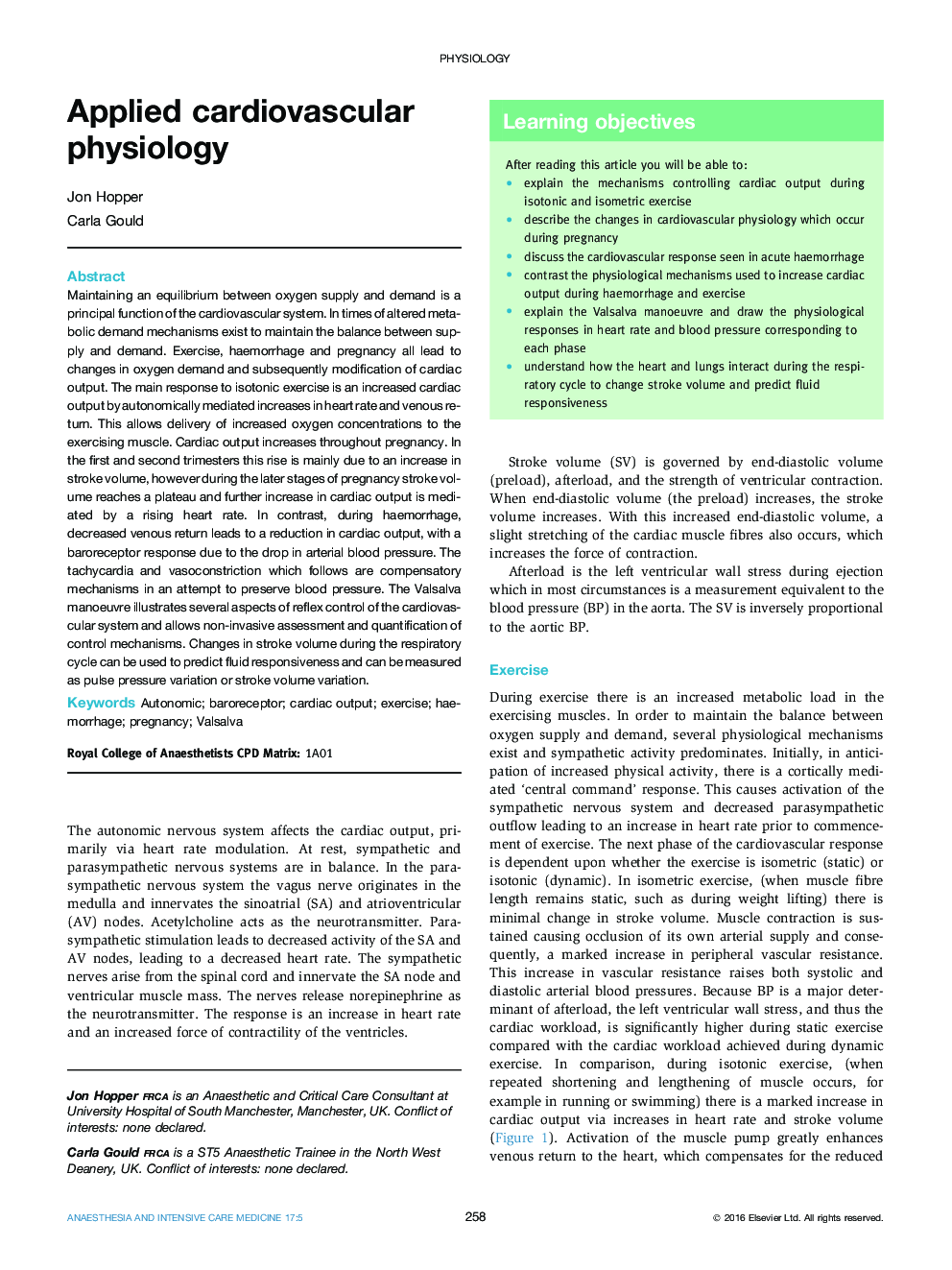| Article ID | Journal | Published Year | Pages | File Type |
|---|---|---|---|---|
| 2742037 | Anaesthesia & Intensive Care Medicine | 2016 | 4 Pages |
Abstract
Maintaining an equilibrium between oxygen supply and demand is a principal function of the cardiovascular system. In times of altered metabolic demand mechanisms exist to maintain the balance between supply and demand. Exercise, haemorrhage and pregnancy all lead to changes in oxygen demand and subsequently modification of cardiac output. The main response to isotonic exercise is an increased cardiac output by autonomically mediated increases in heart rate and venous return. This allows delivery of increased oxygen concentrations to the exercising muscle. Cardiac output increases throughout pregnancy. In the first and second trimesters this rise is mainly due to an increase in stroke volume, however during the later stages of pregnancy stroke volume reaches a plateau and further increase in cardiac output is mediated by a rising heart rate. In contrast, during haemorrhage, decreased venous return leads to a reduction in cardiac output, with a baroreceptor response due to the drop in arterial blood pressure. The tachycardia and vasoconstriction which follows are compensatory mechanisms in an attempt to preserve blood pressure. The Valsalva manoeuvre illustrates several aspects of reflex control of the cardiovascular system and allows non-invasive assessment and quantification of control mechanisms. Changes in stroke volume during the respiratory cycle can be used to predict fluid responsiveness and can be measured as pulse pressure variation or stroke volume variation.
Related Topics
Health Sciences
Medicine and Dentistry
Anesthesiology and Pain Medicine
Authors
Jon Hopper, Carla Gould,
